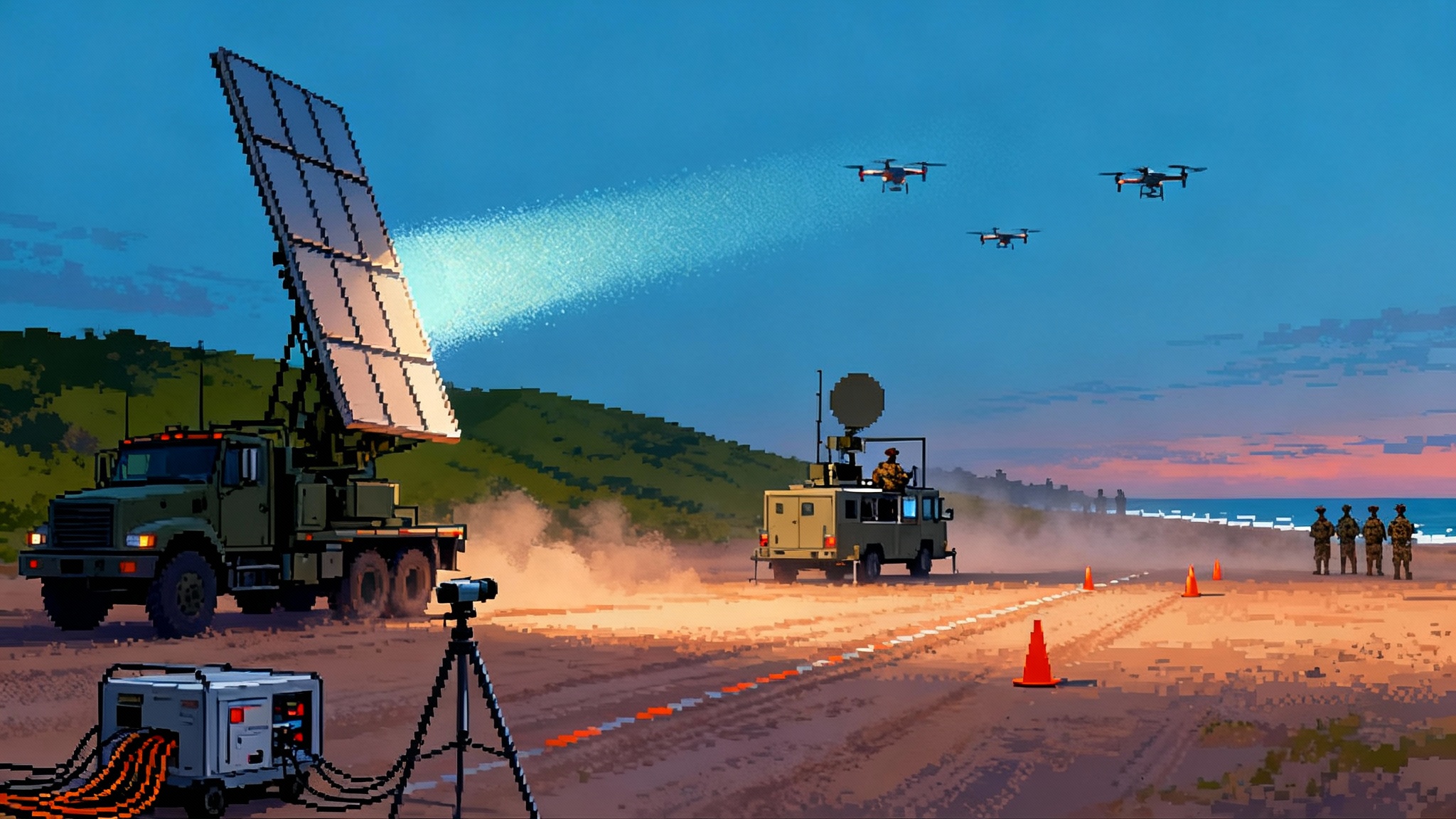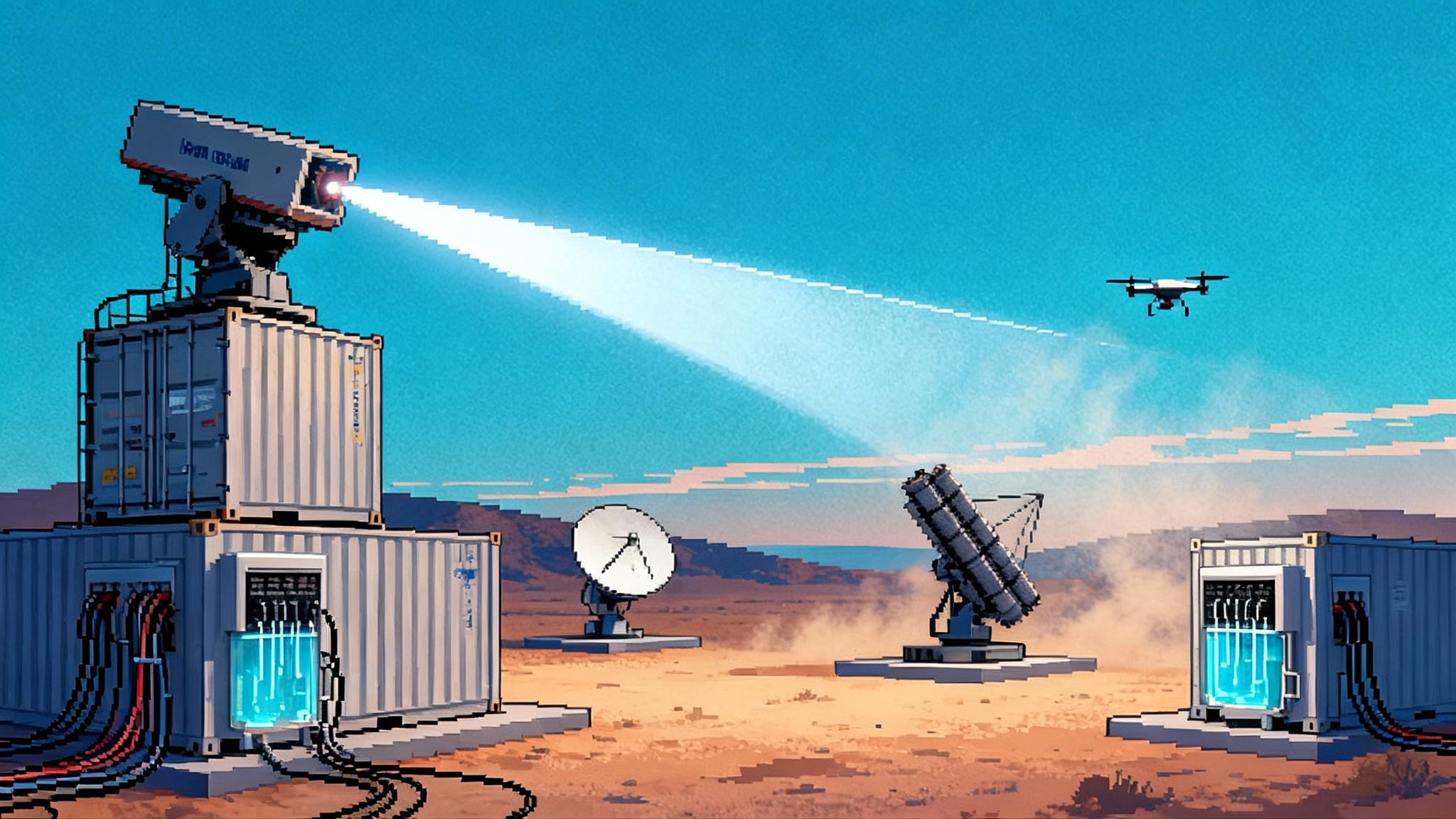Firefly’s SciTec Deal Makes Responsive Space Full Stack
Firefly’s October 2025 deal to acquire SciTec shifts the conversation from fast rockets to full stack space power. Pairing rapid launch with on-orbit sensors and mission-grade ground software could cut cueing from minutes to seconds and make pop-up constellations operational, not experimental.

A deal that turns speed into outcomes
Firefly Aerospace has agreed to acquire SciTec for about 855 million dollars in cash and stock. It is not just a balance sheet headline. It is a product roadmap. Firefly brings a rapid small launcher, an in-space services line, and growing government work. SciTec brings mission software, ground processing for missile warning, and teams that write the algorithms that turn raw photons into alerts. Put together, this is a bid to control the full stack that turns space hardware into decisions. Firefly framed it that way in its announcement, which emphasized SciTec’s role in missile warning analytics and low latency operations Firefly outlines the SciTec acquisition.
If responsive space was once about how fast you can roll a rocket to the pad, the next chapter is about how fast you can roll an answer to a command post. That is what full stack means here. It is launch cadence, satellite agility, onboard processing, ground pipelines, and mission apps that can be deployed, patched, and retasked as easily as a modern cloud service.
Why full stack matters in missile warning and targeting
Missile warning and intelligence, surveillance, and reconnaissance ride on three layers that often live in different companies.
- The physics layer. Sensors collect photons and radio frequency energy. Think infrared focal planes that spot the heat plume of a launch, or synthetic aperture radar that sees through clouds at night.
- The plumbing layer. Data is packaged, downlinked, stored, and sharded across ground systems. Latency dominates here, not sensor quality.
- The brain layer. Algorithms infer what is happening, score confidence, fuse tracks with outside data, and push a cue to a shooter or a commander.
SciTec has worked on the brain and the plumbing for missile warning, including applications in the Space Force’s modernization of ground processing for overhead infrared satellites. Firefly already owns part of the physics and the logistics, from its Alpha launcher to on-orbit services. Full stack is the promise that these layers are designed together so the slowest piece does not set the pace. This mirrors how low Earth orbit constellations and tracking layers such as SDA Tranche 1 and HBTSS are converging with ground systems to deliver timely cues.
A simple example makes this concrete. Imagine a hostile launch. A space sensor detects the infrared plume and assigns a probability that this is a rocket, not a refinery flare. That detection becomes a track, then a track with a predicted path. The ground software fuses it with tip-and-cue from other sensors and pushes an alert to an air and missile defense unit. If each handoff is optimized separately, you can cut a second here and add two seconds there. A full stack approach treats the system like a single queue, measured end to end from photon to fire control, and it attacks the longest waits first.
From minutes to seconds: collapsing cueing timelines
Cueing timeline is the new north star metric. It measures how long it takes to go from first detection to actionable tasking. Collapsing that timeline requires three moves.
-
Put compute near the sensor. If the first classifier runs on the satellite, you can avoid a full downlink cycle for every frame. That means fewer bits on the wire and faster first contact reports.
-
Make the ground elastic. Mission apps need to scale like a consumer cloud service during a regional surge, then spin back down. That avoids throttling analytics when they matter most.
-
Automate the cue chain. Instead of waiting for a human to cross-load a track from a space system to a surface radar, publish a standard message that tactical systems subscribe to, with confidence scores and refresh rates tuned to the mission.
SciTec’s value sits right at these three moves. If Firefly can marry that to rapid launch and on-orbit servicing, the company can chase a step change in how quickly a fleet can be retasked or expanded when something breaks, burns, or surprises.
Pop-up constellations that actually pop up
A pop-up constellation is a small, temporary cluster of satellites that you launch for a crisis, then deorbit when the event passes. The idea has floated around for years. The blockers were schedule and software. It took too long to build and license spacecraft, and it was too hard to integrate a new data source into command systems mid-crisis.
Full stack changes the math. If the bus is standard, the payload is modular, and the ground apps are containerized, you can stand up a niche constellation quickly. Think three to six satellites with a shared clock and duty cycle, optimized for a narrow patch of ocean or a specific trajectory band. They are not meant to live forever. They are meant to flood the zone with coverage for a month, then get out of the way so the orbital lanes do not get crowded.
Firefly’s Alpha gives the company control over the last mile of logistics. The satellite team can build to a known fairing and vibration environment. The mission software team can pre-test processing on representative data. When the call comes, the payloads and the pipeline already rhyme. That is how pop-up stops being a marketing line and becomes an operational option.
From demos to operations: Victus as a turning point
The Space Force’s Tactically Responsive Space program, often shortened to TacRS, proved the rocket side with Victus Nox in 2023. Firefly launched on 27 hours notice, then the satellite executed proximity operations quickly after reaching orbit. The question since then has not been whether a rocket can roll fast. It has been whether the service can normalize the end-to-end enterprise.
That is what makes 2025 important. In February, the Space Systems Command awarded Firefly a 21.81 million dollar launch contract for Victus Sol, which the service has framed as a move beyond demonstrations into operational use Space Systems Command confirms Victus Sol award. A full stack Firefly plus SciTec is designed for exactly that pivot. If the same company can hold launch, satellite integration, ground processing, and mission analytics, then the handoffs that used to take hours can be engineered to take minutes, and minutes can become seconds.
Near term effects: air and missile defense, and maritime targeting
-
Allied air and missile defense. In Europe and the Middle East, operators juggle a mix of radars and interceptors from different vendors. A faster space cue can pull the engagement zone closer to the launcher, which matters for short and medium range threats with thin warning windows. The value is not a magic new sensor. It is the low latency fusion that lets a networked radar shift its search pattern now, not after a cycle. That can reduce false tracks and preserve interceptor stocks during saturation attacks. As recent fielding shows, lasers reset air defense math, and fast cueing helps every effector in the web.
-
Maritime targeting. In the Pacific, targeting is a needle-in-a-haystack problem. Adversaries spread decoys and move under cloud cover. A pop-up constellation with a mix of infrared, radar, and radio frequency payloads can spike the probability of locating a high value ship for a narrow window. The key is to publish a machine readable tasking and reporting standard that surface ships and aircraft can subscribe to, so the cue flows directly into their mission computers. This is how regional forces join the U.S. kill web with minimal friction.
The industrial race to end to end
This deal lands inside a larger race. The winner will deliver a service, not a part.
-
SpaceX is building Starshield as a secure government layer that pairs launch, satellite manufacturing, and downlinks with direct tasking and routing. Whatever the details, the model is end to end.
-
Rocket Lab is assembling a vertically integrated shop, from launch to spacecraft buses to guidance software. It is pitching responsive launch and turnkey constellations to defense customers.
-
Northrop Grumman and L3Harris are building missile warning satellites and integrating ground segments, which positions them to bundle space and software for tracking missions.
-
Planet, BlackSky, and Capella show what imagery as a service looks like when tasking, alerts, and analytics are the product, not pixels.
-
True Anomaly and other newcomers are writing autonomy for space domain awareness, with paired hardware and software that aim to deliver orbital custody as a package.
Firefly wants to join this club by pairing a small launcher that can be scheduled like an airlift sortie with a ground software team that knows the missile warning mission well. The combination could pull it out of a narrow launch vendor box and into a broader category of mission integrators.
What to watch over the next 12 months
-
Victus Sol tempo. How quickly can the team move from alert to launch to useful on-orbit products, and how many times can they repeat it in a year. One launch on cue is a demo. Several in a calendar year, with consistent timelines, is operations.
-
Software accreditation and continuous delivery. Ground processing and mission apps need fast Authority to Operate, automatic scanning, and standard pipelines that can push a patch within days. Watch whether Space Systems Command grants continuous authorizations and whether industry teams can show audits that look like modern software shops, not bespoke one-offs.
-
Tasking application programming interfaces. The most valuable product in responsive space may be a well documented tasking and reporting interface that joint and allied systems trust. If Firefly and SciTec publish a stable interface for cue requests, response formats, confidence scoring, and latency service levels, adoption will rise. If the interface stays closed or changes often, integration friction will keep timelines long.
-
Onboard processing kits. Expect a push for modular edge compute on satellites so new algorithms can be uploaded without a redesign. If Firefly can standardize an onboard processing package across missions, it will shorten the path from lab model to flight software.
The upside is real, but so are the risks
-
Cyber exposure. A full stack provider carries the keys to multiple layers. A software supply chain issue could ripple from ground to spacecraft. The mitigation is to treat space systems like critical cloud services: strong identity, code signing, continuous monitoring, and red teaming that targets every layer, including onboard processors.
-
Space sustainability. Pop-up constellations only work if they pop back down. That requires reliable deorbit plans, propellant margins for disposal, and gate reviews that enforce end-of-life actions. A full stack firm is positioned to make disposal a standard feature, not an afterthought.
-
Sensor fusion at scale. Fusing more data faster is not free. It can increase false positives, swamp operators, or produce brittle models that fail in novel conditions. Teams will need robust validation sets, adversarial testing, and rigorous calibration procedures. The goal is not more detections. It is better decisions per detection.
-
Procurement bottlenecks. The software can move in weeks, but funds often move in fiscal years. To convert demos into services, contracting shops will need vehicles that pay for operational effects and service levels, not only hardware deliverables. Watch for usage based pricing and multi-theater buys that pool demand across allies.
What leaders can do now
-
For defense buyers. Specify end-to-end performance measures like detection to cue timelines, confidence scores at given latencies, and repeatable activation timelines. Contract for service levels, not only parts and bodies. Require deorbit plans with verified propellant margins.
-
For industry builders. Design the pipeline first. Build a reference mission where the satellite software, ground processing, and operator interfaces are treated as one product with a single release train. Publish stable tasking interfaces and commit to semantic versioning so integrators are not chasing breakage.
-
For allies. Budget for data buys that scale during crises. Pre-negotiate data sharing terms so a pop-up constellation can be tasked by multiple nations without a legal scramble. Train on the interfaces during exercises so operators are not learning the system the day it matters.
The momentum now favors software defined space power
Rockets will always matter. But in an era where the limiting factor is how quickly a cue becomes a decision, software decides who is fast and who is late. Firefly’s move to buy SciTec is a declaration that responsive space will be judged by timelines in the operations center, not just the launch site. If the company can prove that a single team can deliver launch on alert, sensors on orbit, and analytics that flow into tactical systems without a human relay, then pop-up constellations will stop being exotic and TacRS will stop being a demo. The story of the next year will be whether those timelines compress in the real world, with real missions and real users. If they do, full stack space power will become the standard, and the race will shift from who can launch fastest to who can deliver answers the fastest.






